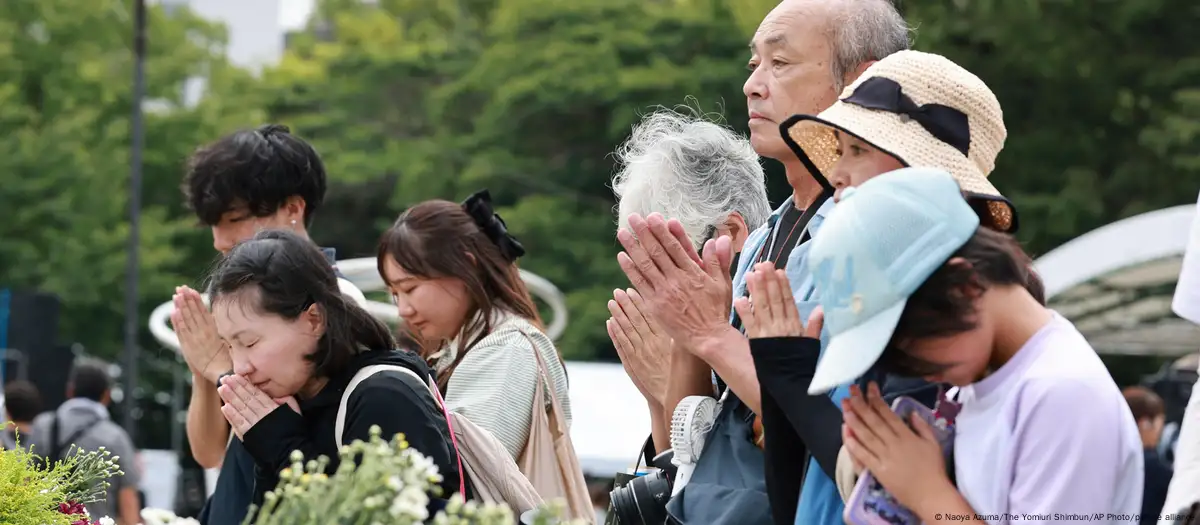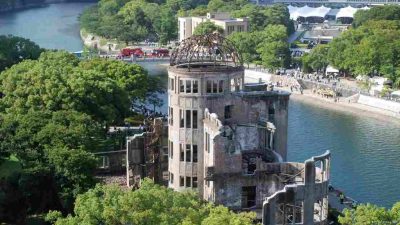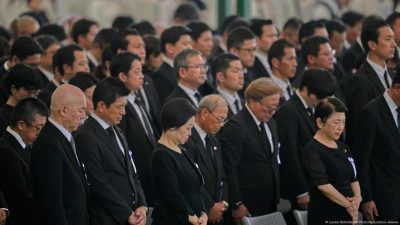
Eighty years after atomic bombing, with number of survivors decreasing, Japanese society strives to maintain memory of live attacks and warn the consequences of nuclear weapons.
Japan recalls this Wednesday (08/06) the 80th anniversary of the launch of the atomic bomb over the Japanese city of Hiroshima. The first nuclear attack in history in the last days of World War II killed about 80,000 people in the initial explosion.
Tens of thousands of people from around the world were expected to the victims’ tribute ceremonies in Hiroshima and three days later in Nagasaki, also a nuclear target that week of 1945.
However, eight decades after the attacks, the ceremonies will feature fewer survivors – known as Hibakusha – than at past events.
As first -person reports of attacks are getting lost, museums, organizations, and individuals have been mobilizing to keep their stories alive.
On Wednesday, hours before the official ceremony, while the sun was born about Hiroshima, some survivors and their families began to pay tribute to the victims at Park Memorial of Peace, near the hippocrive of the nuclear explosion.
At 08:15-time an American bomberfiner US B-29 launched the atomic bomb over Hiroshima-touched the traditional bell of peace and there was a minute of silence.
Hiroshima was completely destroyed after US nuclear attack on August 6, 1945 | United Archives International/Imago
Japanese Prime Minister Shigeru Ishiba, Hiroshima Mayor Kazumi Matsui and other authorities deposited flowers at the monument that honors the dead.
The total of dead in the city would rise to 140,000 by the end of 1945, as a result of severe burns or radiation -related diseases. To this day, the number of victims remains controversial as the population has suffered from long -term sequelae.
Against nuclear weapons
Vocal defender of the abolition of nuclear weapons, the mayor warned about the current global arms race, citing wars in Ukraine and the Middle East.
“These events flagrantly disregarded the lessons that the international community should have learned from the tragedies of history,” he said. “They threaten to overthrow the peace building structures that have worked hard to build.”
He also urged younger generations to recognize that such “misconceptions” can cause “completely inhuman” consequences for their future. Dozens of white doves, a symbol of peace, were released after their speech.
Kazuo Miyoshi, a 74 -year -old retiree, went to honor his grandfather and two cousins who died in the bombing. He prayed that the “error never repeats”. “We don’t need nuclear weapons,” he said.
Outside the park, under a strong security scheme, more than 200 protesters gathered, holding posters and flags with messages against the development of nuclear weapons and the war in Gaza.
Pressure on Japanese Government
Ishiba, in turn, reiterated in his speech the government’s commitment to work for a world without nuclear weapons, but did not mention the treaty about the ban on nuclear weapons. Survivors, activists and part of the authorities press the government to sign and ratify it.
At a news conference, the prime minister expressed confidence in the US nuclear discourse. He stated that Japan follows a non -nuclear principle and is surrounded by neighbors who have nuclear weapons. The stance, he said, does not contradict Japan’s search for a free world of these weapons.
 In Hiroshima, the atomic bomb summit is the only remaining structure near the epicenter of the 1945 atomic pump explosion | STR/JIJI Press/AFP
In Hiroshima, the atomic bomb summit is the only remaining structure near the epicenter of the 1945 atomic pump explosion | STR/JIJI Press/AFP
Earlier this year, part of the survivors expressed disappointment with what they considered a mild response from the Japanese government this year to observe US President Donald Trump about the attack on Iran in June. The Republican compared the American bombing to attacks against Hiroshima and Nagasaki.
Former first ministers emphasized Japan’s status as the only country in the world to have suffered nuclear attacks and expressed determination in seeking peace. But for part of the survivors, these are empty promises.
The Japanese government has paid compensation only to veterans of war and their families, although the survivors sought reparation for civil victims.
 Japanese and visitors around the world make a minute of silence when the bomb hit Hiroshima in 1945 | Louise Delmotte/AP Photo/DPA/Picture Alliance
Japanese and visitors around the world make a minute of silence when the bomb hit Hiroshima in 1945 | Louise Delmotte/AP Photo/DPA/Picture Alliance
Less Survivors
However, this year already has fewer survivors – known as Hibakusha – than 2023.
A government report released in March confirmed that there are now only 99,130 living Hibakusha – 7,695 less than last year. The average age of survivors today is 86 years.
In contrast, museums, organizations and individuals mobilize to keep their stories alive.
In Hiroshima, one of them is Shun Sasaki, who helps convey the horror of the attack on his hometown and its consequences. Since August 2021, the 12 -year -old boy talks to foreign tourists at the Hiroshima Peace Memorial Park.
“I was guiding an American and he said he now thinks we should ban all nuclear weapons. It made me happy, because if he leaves and tells the truth about Hiroshima to someone, and then that person tells someone else, the message of peace will spread,” he said.
Sasaki was chosen to speak at the ceremony on Wednesday, as a representative of children committed to peace in Japan.
Similar efforts convey Hibakusha’s experiences in Nagasaki, which was the target of an even more powerful plutonium bomb on 9 August 1945. Dead count reached 80,000 people due to original detonation and long -term effects.
The Nagasaki Atomic Bomb Museum has launched a new international campaign on the subject. “Hiroshima will be forever recorded in history as the first place of atomic bombing,” said Takuji Inoue, director of the museum. “However, if Nagasaki will remain as the last one depends on the future we create.”
“We are approaching an age when the Hibakusha will no longer be among us,” said Inoue. ‘However, as a city bombarded by an atomic bomb, we are deeply concerned with the increasing risk of nuclear weapons, fueled by the turbulence of wars in Ukraine and the Middle East and other worrying events. ”
Originally published by DW on 08/06/2025
Source: https://www.ocafezinho.com/2025/08/06/como-o-japao-tenta-manter-a-memoria-de-hiroshima-e-nagasaki/

